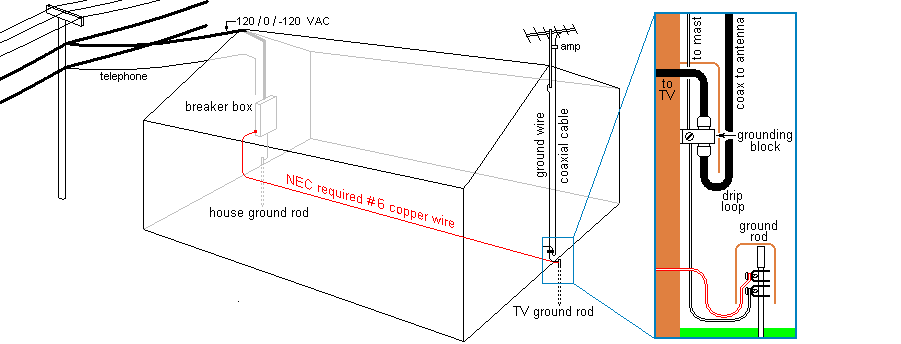I wanted to ask this question in the "Installer's Forum", but I'm not allowed "in" - Have to be an "installer"! Don't see any other good place for question of this type...
My question has to do with antenna grounding... my antennas [TV - DirecTV Dish - Satellite Internet Dish] are mounted on side of house, above porch roof... without grounding at present.
Is there a standard way to mount a grounding wire/cable across a porch roof, then down to ground level? Hate to install cable brackets by making holes in roof shingles for this... and don't see easy way to route cable through the roof, then through porch deck - but, seems like that kind of "straight run" would be the ideal "run" for lightning protection.
Is there some standard method for doing this - or do I need to find an "inventor"?
If no one here can answer... where else should I go to "ask"?
Thanks in advance.
My question has to do with antenna grounding... my antennas [TV - DirecTV Dish - Satellite Internet Dish] are mounted on side of house, above porch roof... without grounding at present.
Is there a standard way to mount a grounding wire/cable across a porch roof, then down to ground level? Hate to install cable brackets by making holes in roof shingles for this... and don't see easy way to route cable through the roof, then through porch deck - but, seems like that kind of "straight run" would be the ideal "run" for lightning protection.
Is there some standard method for doing this - or do I need to find an "inventor"?
If no one here can answer... where else should I go to "ask"?
Thanks in advance.


